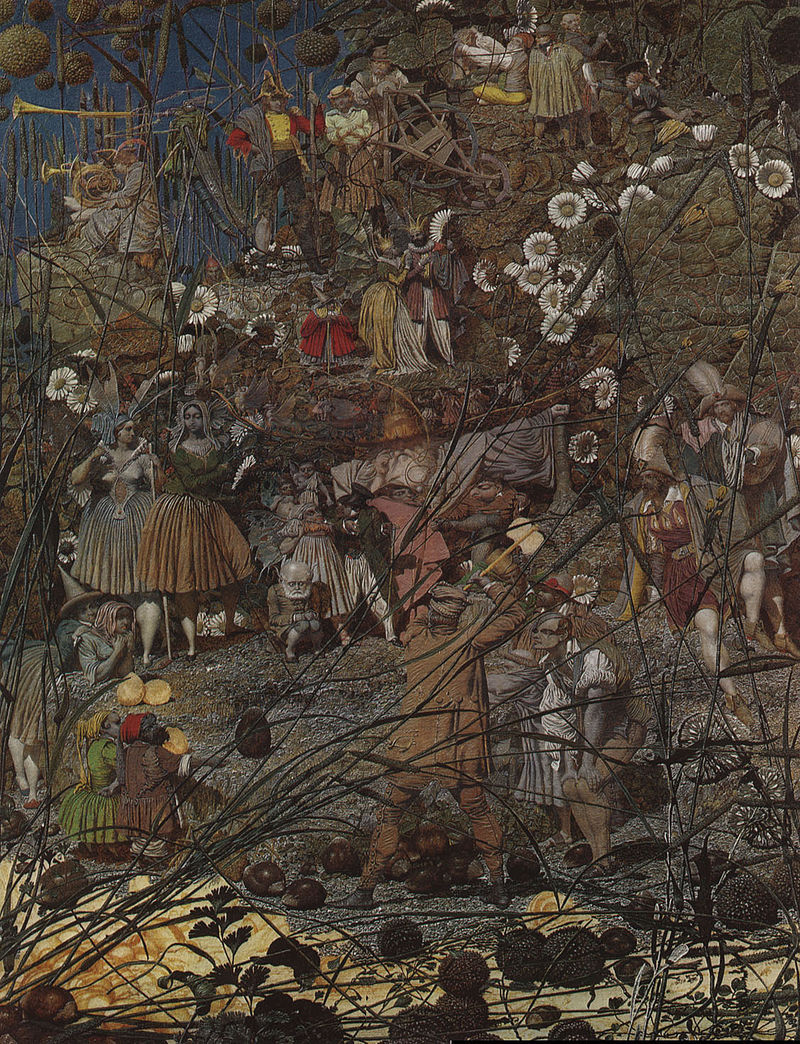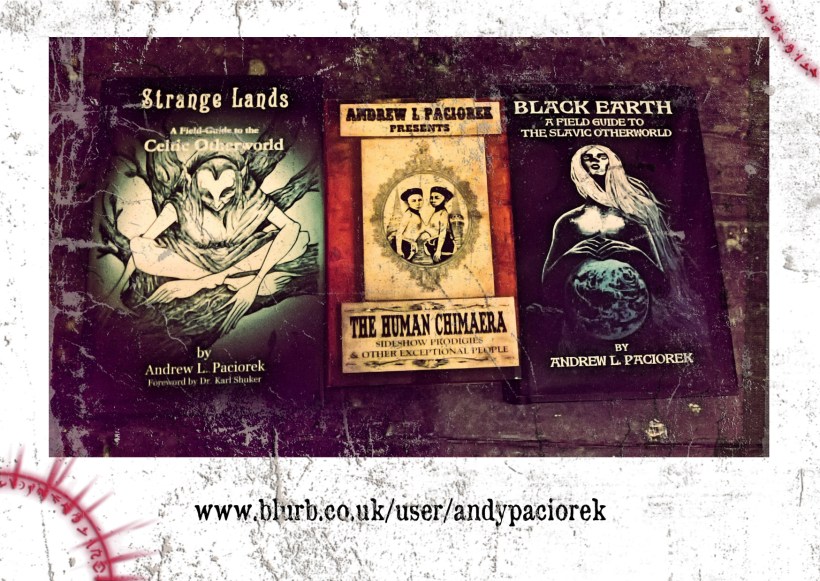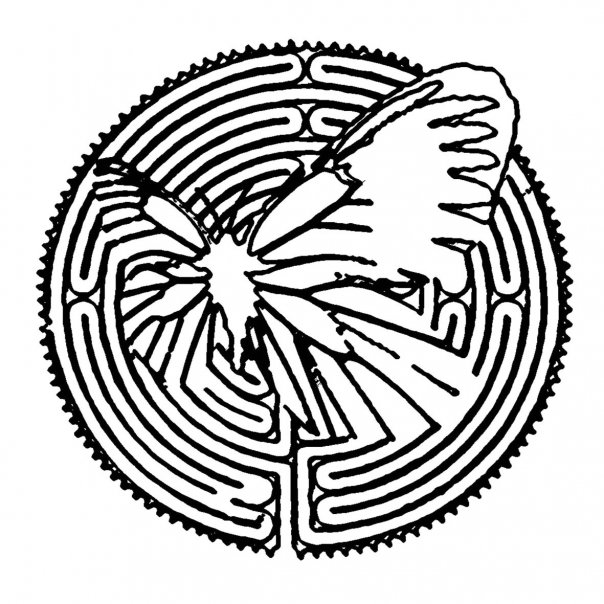Foawr Also known as: Stone-Throwing Giants, Fooar.
Upheavals in and on the earth that led to the creation of many immense and intriguing land formations and features were often accredited to the actions of Giants.
Many Giants in Britain and Ireland displayed a propensity for throwing stones, yet the Manx Foawr were absolutely notorious for heaving boulders around. They would throw rocks at humans, at ships, at each other and they would throw rocks just for the sake of throwing rocks. It seems however that the males of the species were more inclined towards trouble-making and stone-lobbing than the females. The masculine Foawr were despised by human farmers, not only for their rock-hurling but also for their other habit of ravishing cattle. It has been considered that the Foawr may be of the same lineage as the Celtic demonic race the Fomorii and some at least were said to be the children of the haggard storm-goddess, the Cailleach Bheur.
Text and image © Andy Paciorek
abridged and amended from the book
Strange Lands: A Field Guide to the Celtic Otherworld

Tag: Strange Lands
#Folklore Thursday: Folk Magic – Horse Whisperers
Horse-Whisperers were far more common in the times when horses were more widely utilised for transportation, agriculture and industry. Some horses more than others are loath to be ridden and strongly resist being tamed. It is in these circumstances that Horse-Whisperers would come into their own. They were so named because they were believed able to calm and train wild horses by whispering into their ears (the Horseman’s Word). There have been suggestions that concoctions of certain aromatic herbs may have also been utilised in the soothing of equine temper and nervousness. Whatever their true methods, it could not be disputed that the Horse-Whisperers generally had an excellent and impressive record of breaking beasts. Onlookers and clients would often conclude that supernatural powers were afoot, a supposition that Horse Whisperers did little to dispel and may even have encouraged. Not just anyone could become a Horse-Whisperer however, for they guarded their prowess with the utmost secrecy. Elaborate Masonic-style initiation was the only way into the ranks in Scotland, and women were never made privy to the Horseman’s Word. Rumours spread that the introductory rites and the deliverance of knowledge involved the presence of the Devil himself. The form of Horse-Whisperers known as Toad-Men heightened this sinister notion further. Their name was derived from their habit of carrying the skeleton of a Toad around in a pouch, apparently as a magical device.
Image and text. © Andy Paciorek. Adapted from the book Strange Lands: A Field Guide to the Celtic Otherworld
Folklore Thursday: Samhain and the Celtic Vampires
In Ireland, the Failte na Marbh (Festival of the Dead) was held annually on the 31st October. (also known as Samhain. All Souls and most commonly Halloween). At this time, the dead would pay a short visit to their living relatives and, after a year in the grave, they were obviously thirsty and famished. It was then the duty of the living kin to provide them with food and drink. If sufficient victuals were not offered, the dead would then feed from the veins of the living. These creatures were known as Marbh Bheo – the Night-walking Dead. On the Scottish Isle of Skye pure vengeance was often thought to be the prime mover for the Biasd Bheulach. These Vampire-like creatures would not only spare their revenge for the specific individuals who had done them wrong in life, or had sent them to the grave, but would exact grim penance upon any living soul that fell within their grasp. In England the dead thought most likely to rise again were suicides & executed criminals, and Northumbria in particular was said to have suffered several Vampire plagues. Prevalent also in both Irish and Scottish lore were Vampires that had no discernible human heritage, and instead seemed to be of a malevolent Fay stock. Such a shadowy creature was the Irish Dearg-Due or Dearg-Diulai – the Red Bloodsucker. Frequently the Dearg-Diulai appeared as beautiful, pale females cloaked in a sanguine-red capes. Attracting warm-blooded males with their feminine charm, seduction soon turned to slaughter.
The Baobhan Sith, or Spirit Women, are a strange breed of Scottish Vampiric entities. They most frequently manifest as small groups of beguiling women, dressed in flowing green cloaks that almost conceal the fact that their legs are of a form more befitting Deer. They may also at times take the forms of Hooded Crows. Highland tales relate how they may entrance men with their dancing before sinking their fangs into them. The Baobhan Sith display a fear of cold iron.
The Glaistig are green-clad Fay women of fair beauty despite their lower bodies which are actually those of Goats. They are solitary creatures of converse character, for whilst they at times may greatly assist children, old people and cattle-farmers, should they chance upon lone male travellers or shepherds then their temperament changes entirely. They will first engage their victim in a seductive dance, before murdering and feasting upon them. In addition to fresh man’s blood the Glaistigs also have a taste for fresh cow’s milk.
Abridged text and amended images from Strange Lands: A Field Guide to the Celtic Otherworld – © Andy Paciorek
‘On Halloween Strange Sights Are Seen’ – About a Short film by Tea & Morphine

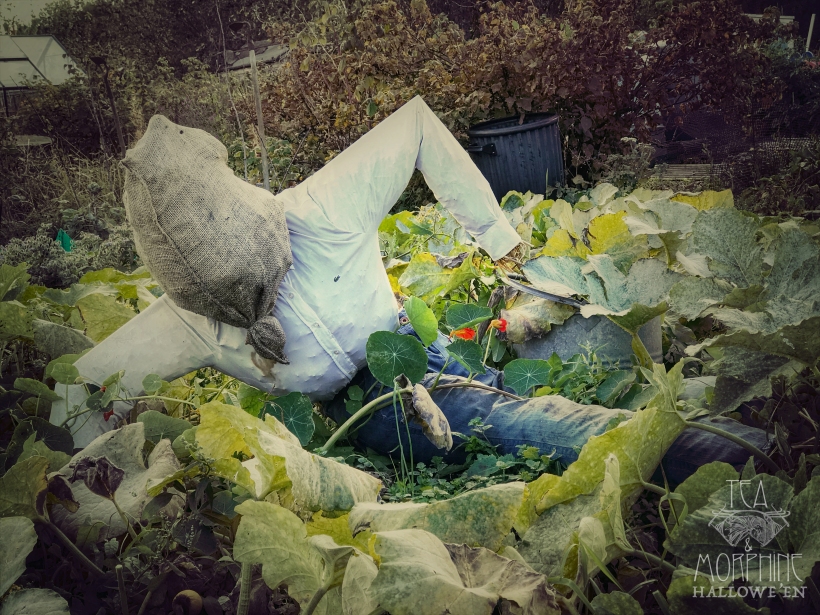
On 31st October, this Halloween, ‘Tea & Morphine’ will take us on an unusually eerie walk through a small Hertfordshire allotment. In this seven minute video short the viewer is taken on a surreal journey that transforms an everyday allotment into a world of mystery and intrigue as we are introduced to the many weird and wonderfully handcrafted characters who reside among the plots there.
Along the way we encounter sinister sunflowers, pumpkin laden tables and a whole host of quirky scarecrows and oddly imagined effigies, set to the atmospherically whimsical music of The Parlour Trick, the film takes the traditionally English pastime and spins a darkly twisted tale of the unseen going’s on when the inhabitants are left alone to their own devices. With no rigid plot or narrative it is left to the viewer to imagine the storyline as the procession moves dreamily through this surreal landscape.
‘Tricksters and Threats’. Also known as: Scarecrows, Wurzels, Tatter-Men, Mommets, Bugbears ~ Tatty-Bogles cannot help but frighten, as they shamble down country roads with their arms outstretched as if crucified – yet inspiring terror may not be their prime motive, as they simply want to stretch their legs after a long day of solitude standing. The fear generated in human observers may be either amusing or regrettable to them, or it may even go unregistered. It is by their very name and nature to frighten, for they are the Scarecrows erected in fields by farmers to try and protect their crops from the hungry beaks of birds.
The reasons for their nocturnal animation is somewhat of a mystery, for perhaps not all will rise and leave their plot, but some seem more inclined to come to life at night. Perhaps this is of their own volition or maybe there is some external enchantment at work. It could be that the magic of Witches or perhaps Fay beings animate these rag-bag effigies in order to cause mischief or perform other tasks. Otherwise a Scarecrow could provide an ideal host for a wandering spirit or Demon that possesses no true form of its own. Such strange and shapeless souls are the Brollochan. These uncanny wanderers may visibly consist of at best a mouth and pair of eyes but they can grant mobility to any inanimate object they enter. Should a Tatty-Bogle be thus possessed by a Brollochan, this would be revealed as “Thyself” and “Myself” are said to be the only words it can utter.
Extract on the folklore of scarecrows from – ‘Strange Lands ~ Supernatural Creatures of the Celtic Otherworld’ by Andrew L. Paciorek.
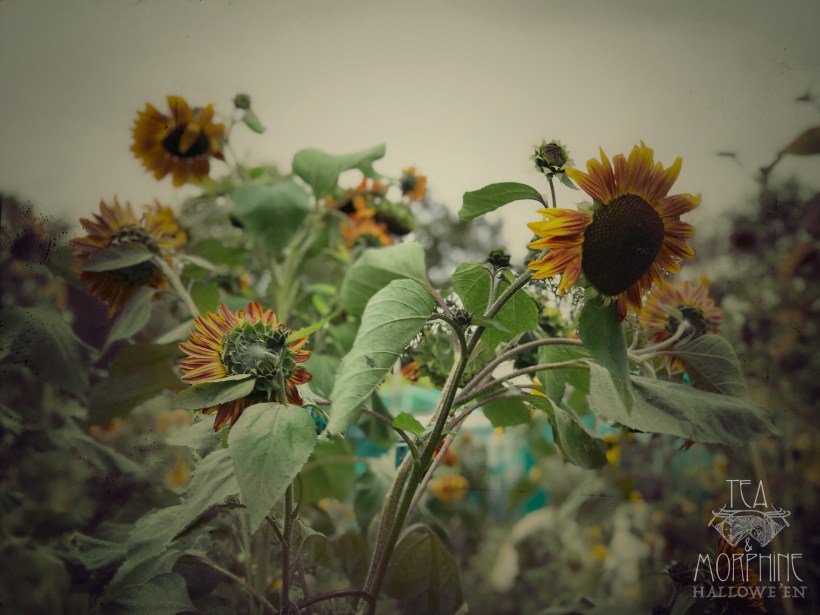
http://theparlourtrick.com
Music is by The Parlour Trick; a song chosen from ‘A Blessed Unrest’ known “The Halloween album of the year” ~ Douglas Wolk (Rolling Stone, Pitchfork, TIME) Meredith Yayanos; Voice, strings, theremin, percussion & Dan Cantrell; Accordion, bass accordion, pump organ, celeste, glockenspiel, percussion.
https://theparlourtrick.bandcamp.com
‘On Halloween Strange Sights Are Seen’ is being shown Wednesday 31st October 2018 on the Tea & Morphine Facebook Page
https://www.facebook.com/teaandmorphine/
Images © 2018 Tea & Morphine
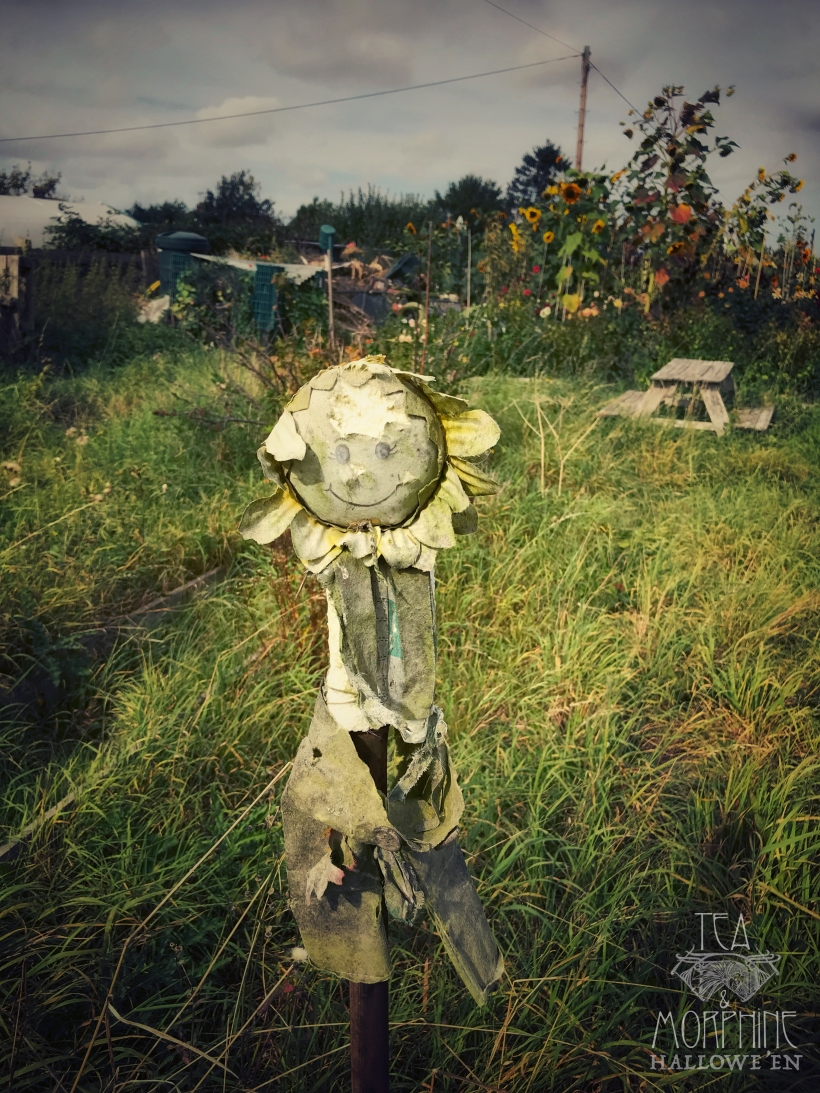
Folklore Thursday ~ Night Hags and Demon Lovers
Night Hags: Also known as: Night-Mares, Mara, Mera, Mares, Crushers, Drudes, Mare-Demons, Hagges, Haints, Entities, Mallt y Nos, Night-Fiends, Cauchemar, Night-Elves.
Sometimes people who suffered from wasting diseases such as Tuberculosis Consumption were said to look ‘Haggard’ or ‘Hag-Ridden’. This refers to the belief that, as they slept, a Night-Hag had entered their bedchambers and either sat upon their chests crushing them (but not to the point of fatality) and perhaps sucked away at their breath, or their vitality, or alternatively had actually ridden their victims entirely into the air and sometimes over distance. Either way, their human victims were left exhausted and often diseased. The alternative name of Mara and its similar derivatives is said to have meant Crusher in Old-English, and it is from this word that the term Night-Mare originated – initially meaning not a bad dream but an actual external terror. The term Hag-Riding has also been applied when horses who had been left resting have been found to be exhausted and covered in sweat in the morning. Again it was considered that the Night-Hags had been riding the horses around in circles to the point of collapse during the hours of darkness. In some locations it was thought that these fiends on horseback delivered bad dreams to households, thus giving an additional meaning to Night-Mare. An alternatively used term to Hag-Riding is to be Owl-Blasted, which refers to the belief that Night-hags would sometimes take the form of these nocturnal birds.
Demon Lovers: An Incubus is a male spirit that seeks to indulge a mortal woman in carnal activity, whilst a Succubus is a female spirit that likewise preys on the passions of mortal men. However it has been suggested that both spirits are one and the same, and that the Incubi / Succubi adopts only a specific gender in relationship to its particular victim. The nature of these nocturnal paramours preyed heavily upon the minds of the Medieval Church, possibly because many of the alleged victims were members of their own ministry who had prescribed to a life of chastity. (Merlin, the great sage of Arthurian legend was thought to be the offspring of an Incubus and a Nun). The Church scholars deliberated on whether the phenomenon was mere hallucination borne out of celibate frustration, or sinful fantasies made flesh, but this held their own people to blame almost as much as the other considered option that such claims were in fact a cover-up for actual corporeal liaisons with human partners. Frequently, though, those who claimed an encounter with an Incubus / Succubus seemed not to have been pleasured by such a visit but to have been genuinely shocked and frightened. Therefore further attention was concentrated on seeking out an external, supernatural culprit. They questioned whether these night-visitors were perhaps a salacious breed of Faerie, or maybe vengeful Ghosts, but as all were considered agents of the Devil anyway then it was simple enough to label them Demon-Lovers.
Images and Text © Andy Paciorek
Adapted from the book Strange Lands: A Field Guide to the Celtic Otherworld
#FolkloreThursday ~ The Banshee, Bean-Nighe & the Gwrach-y-Rhibyn
Presenting for Folklore Thursday a collection of strange entities from the Paciorek bestiary …
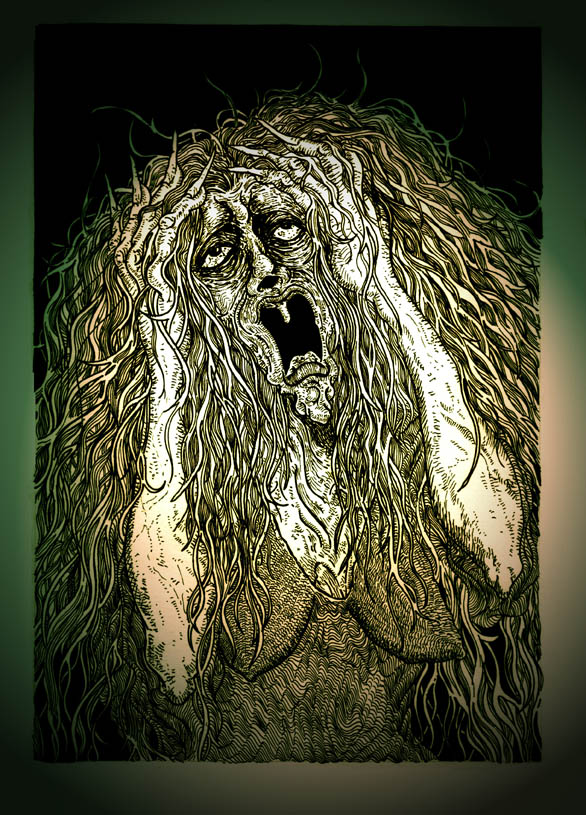
The Banshee
Also known as: Beansidhe, Bean-Si, Benshee, Fairy Woman, Woman of the Hills, Bachuntas, Badbh-Chaointes, Cointeach, Wailers, The Keener, The One Who Keens, Mna-Sige, Mna-Sidhe, Cyhiraeth, Cyraeth, Cyoerrath, Cyhyraeth, The White Lady of Sorrows, The Weeper, The Skree, Caoineag, Caointeach, Fear-Sidh, Seinn-Bais, Death Music, Tolaeth, Ghost Sounds, Bocanachs, Bowa.
The wail of the Banshee (known as the Keening) is said to be heard either by the person whose death is imminent, or by someone closely associated to them. People with a strong Celtic bloodline are considered more likely to encounter a Banshee, and some old families may hold a peculiarly strong bond with one of these creatures. This is sometimes thought to indicate a distant Fay strain within their genes but others have suggested an earthier, more sinister reasons for the connection. The finger points at certain reputedly Banshee-ridden families with the accusation that one of their ancestors murdered a young lady, possibly a pregnant mistress or other similar unfortunate, and so it is believed that their descendants must carry a reminder of this shame for evermore. The shadow of this sin falls at the approach of their darkest hours and may be specifically regarded as being a Hateful Banshee. To those who have not heard the Banshee’s cries (and count themselves lucky for this), it is often imagined that this must be a loud, dreadful noise and sometimes it has been reported as such (usually in the cases of Hateful Banshees), but not always. Sometimes her Keening was described as being oddly melodic and strangely comforting, especially if heard by someone who was old and failing , had endured a long, discomforting illness or was of a family favoured by the Faeries.
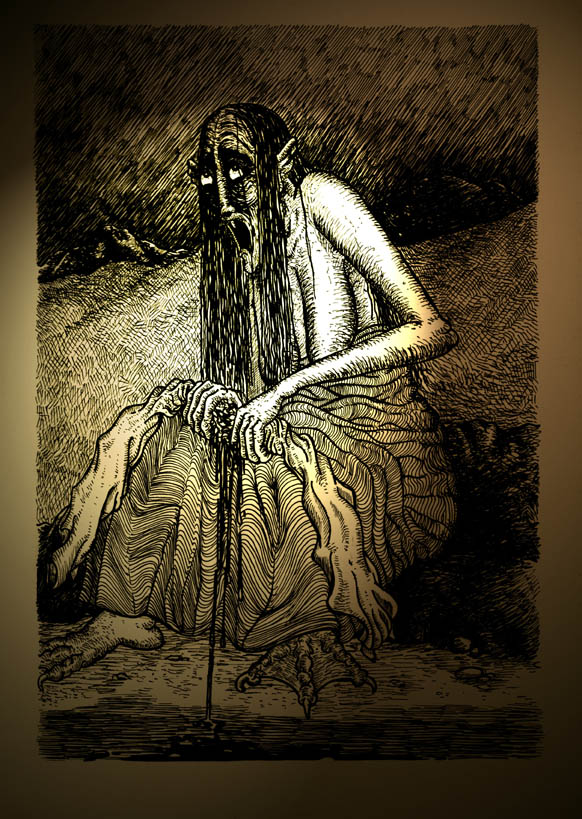
The Bean-Nighe
Also known as: Night Women, Washer Women, Caoineag, Ban Nighechain, Nigheag-Na-H’ath, Washing Women, Little Washers by the Ford, Washers by the Banks, Washers of the Shroud, Washers of the Night, Night Washers, Cannerd Noz, Konnerez Noz.
The Bean-Nighe are generally encountered either sitting beside, or sometimes paddling in, remote streams and the shallows of rivers. Here they attend to their laundry, yet they are not conventional mortal women tending bucolic washing chores. A single glance at their hideous visage and the grim cloth they wring betwixt their fingers is more than enough to determine their anomalous character. The clothing that the Bean-Nighe is seen to wash is either the blood-drenched clothing of the observer, or the burial shroud that will consequently wrap their lifeless body. These creatures are said to be the souls of women who died whilst giving birth, doomed to remain on this earth either until Judgement Day or, as it is more frequently thought, until the day that they would otherwise have died. As a grim consequence of their fate, they are also aware of all the other people that will soon be visited by death and are sometimes reported as crooning a mournful dirge to themselves that recounts the names of all the ill fated.

The Gwrach-y-Rhibyn
Also known as the Hag of the Dribble, Hag of the Mist and also sometimes as y Cyhiraeth.
This Welsh portent of death may suddenly leap out of a water channel, but otherwise she will invisibly stalk her victims until they pass a crossroads or stream. Here she will become all too visible and audible, for in both instances her cries, like those of the Banshees and Cyraeths, are harrowing. If the person thus doomed to die (either the observer or someone they know) is a man the Gwrach-y-Rhibyn will holler “Fy ngwr! Fy ngwr!” (“My Husband! My Husband!”) but if a youth is to succumb, then she will cry “Fy mlentyn! Fy mlentyn bach!” (“My child! My little child!”) She is a hideous sight to behold, with her crooked back, hooked nose, long filthy hair and manic eyes. She is pinched and scrawny, yet her superficial mass likely betrays her true strength and vigour. The most frightfully inhuman of all her features, however, are her long thin arms, for not only do they end in dreadful talon-like hands, but black scaly wings also hang from these extremities. These bat-like appendages are thought capable of flight. Her negligible clothing is black and ragged.
All Text and Imagery © Andy Paciorek
For more on these subjects and many many others see the book
Strange Lands: A Field Guide to the Celtic Otherworld
Available to purchase from – http://www.blurb.co.uk/user/andypaciorek
Seen in Half Dreams: The Fairy Investigation Society Interview Andy Paciorek
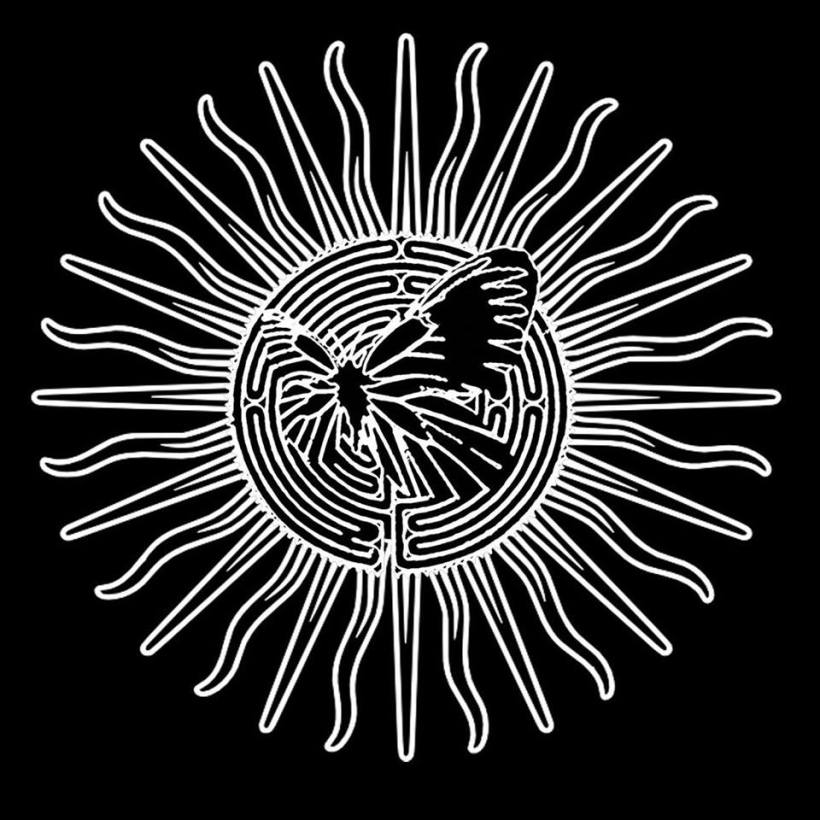
Andy, thanks so much for agreeing to talk. First of all, can you just tell us something about your background and how you became so interested in fairy art?
Hi, thanks for asking me to talk. I have had an interest in strange and mysterious subjects and have also compulsively drawn since I was a child, so it was probably inevitable that I would someday end up drawing fairies. As a very young child I think I saw stuff, that I never really thought anything of at the time – faces in the trees and one time I remember playing on the fields at the back of my house with an unfamiliar child who was very pale with white hair and I think white clothing. Nobody else seems to have seen him or knew who he was, which was odd as it was a small village where most people knew each other. I think he said his name was Samuel. I never thought he was a ghost, angel, faerie (though some theories identify faeries as either being ghosts or fallen angels) – just a kid. He wasn’t an imaginary playmate either as I only ever saw him the once. As I got older I became more and more interested in supernatural subjects but paid little attention to faeries as still then I had the Tinkerbell impression of them.
So what changed things?
Well, in my reading I came across Passport to Magonia by Jacques Vallee and then the books of Hilary Evans and that brought me around to a new way of thinking about faeries, which inherently felt righter to me. On the art side as well as Froud and Lee’s
seminal Faeries, via the Pre Raphaelites and Aesthetic artists I became aware of the Victorian genre of Fairy painting and I became enamored especially with the works of Richard Dadd and John Anster Fitzgerald. There was a dark, mysterious underbelly to their work which really resonated with me.
Jeremy Harte has a very nice comment somewhere: he says that Brian Froud basically took Katharine Briggs’ Fairy Dictionary and drew it.
How does folklore writing inform what you draw, Andy? It is very influential and inspiring. How I came to write and illustrate my own folklore books, however, is a bit of a strange journey. At one point in my life an opportunity arose for me to work on a travelling carnival, so I literally ran away with the show folk for a few years, starting off in Wales and then travelling to the Far and Middle East. There was a girl who worked on the fair with us in the Philippines, who had a sort of a Goth look and one night I heard some Filipinos refer to her as a WokWok. And I asked them what that meant and they said Witch of the Night. I broached the subject with other locals and they informed me that the WokWok was a type of Aswang, a breed of differing vampiric or sinister entities and that piqued my curiosity. Then in Oman on one of the carnival games, the prizes were big Tasmanian Devils – Taz cartoon character stuffed toys and a local pointed at the toys and told me that people like that lived in the interior of the country, so I grew more and more interested in creatures and beings from different world folklore and mythology. Upon leaving the carnival life and returning to Britain I worked for a brief stint temping at Bizarre magazine in London. Whilst there a small filler feature was needed so I wrote a short ‘Ten alternatives to the Bogeyman’ which featured I think WokWok as well as Black Annis, possibly Tonton Macoute (Uncle Hears Me) and I cannot remember who else now but I went on to write about and illustrate far more than ten. I decided to illustrate a series of portraits of strange creatures from British and Celtic folklore. For research I had a massive pile of books scattered around me – Reverend Robert Kirk, W.Y Evans-Wentz, Katherine Briggs, Wirt Sikes, W.B. Yeats and many more and I thought it would be handy to have all this reference in a single book. So not finding one at a time, my proposed series of portraits became that book – Strange Lands: A Field Guide to the Celtic Otherworld containing over 170 illustrations and further descriptions of all manner of mystical beast and beings, many from the Faerie domain. Whilst I was still working on it John And Caitlin Matthew’s Element Encyclopedia of Magical Creatures came out, which is a bumper reference book. I would have possibly pulled my hair out in despair at the work I’d done, had Harper Collins not contacted and commissioned me to provide interior illustrations in the Encyclopedia. In the end the books have a different feel to them but actually complement each other pretty well.
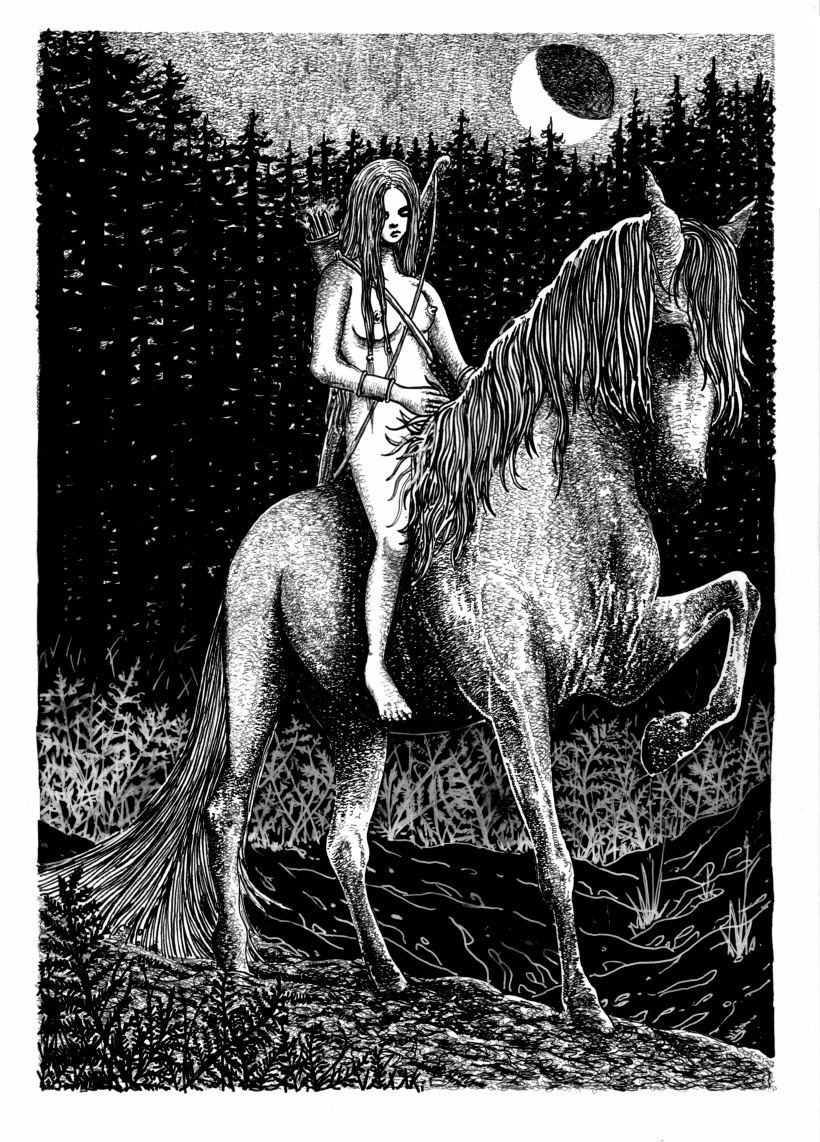
And your latest published work?
Well, last year I published Black Earth: A Field Guide to the Slavic Otherworld, a book I had finished writing years ago but which span over time getting the illustrations done amongst other work I had on. Again, there are a number of Faerie type entities to be found. Slavic folklore is one of the most under-represented in English language or translated books, which is a shame as there is some rich interesting material to be found in those lands. I am pleased I tackled that as a subject and hopefully there will be further material published by other authors relating to that lore. I am tempted to do further Otherworld Field Guides; have a series of them – Japanese, Native American, Oceanic … etc. There is a wealth of possibilities but it is also a lot of work involved.
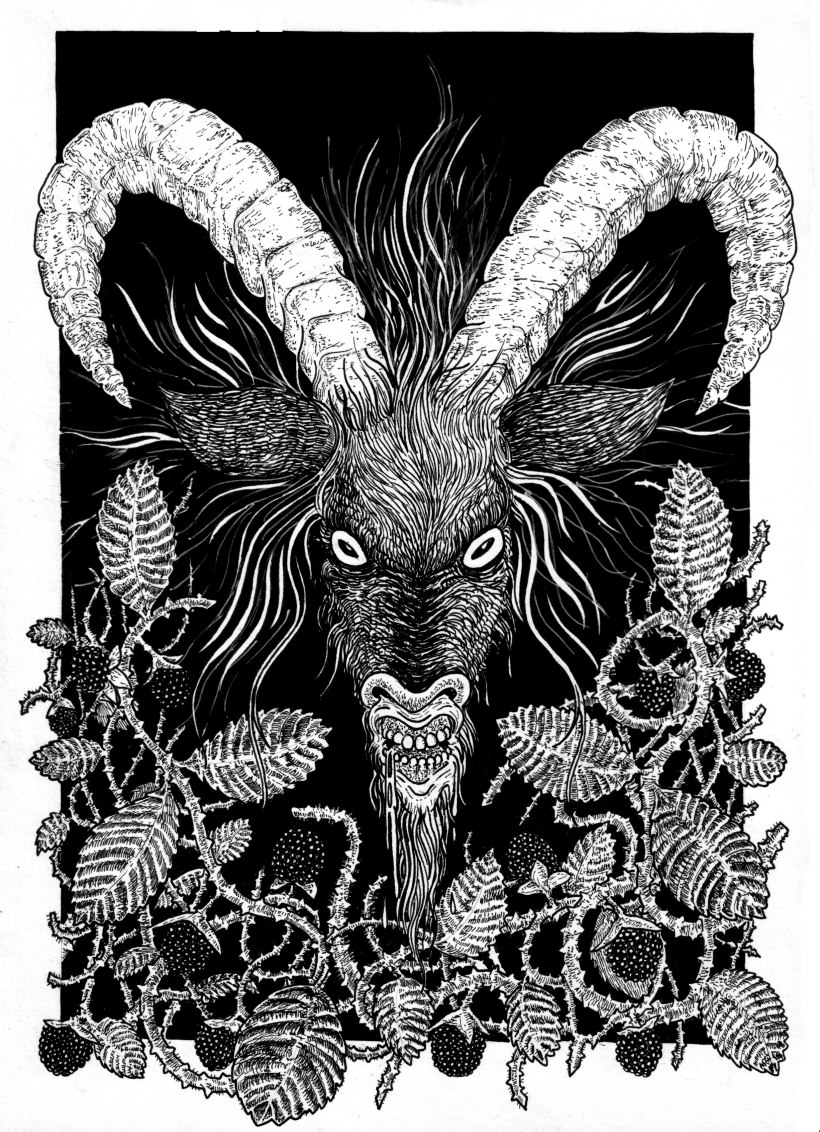
As to your drawings I just want to start, if I may, with the phooka, a favourite Irish supernatural creature. How do you go about drawing that?
With Strange Lands, there was a lot of almost automatic-style drawing involved. After reading a text I would just draw with the being vaguely in mind. What was on the page quite often was initially little more than a scribble, but from that I would trace over and the pictures which were in the book. Whilst numerous entities virtually drew themselves, others had a little bit more conscious input from me. I knew I wanted a goat in the book and the Welsh Gwyllion could have also offered that opportunity but of all the shape-shifting forms the Phooka takes, the goat seemed to push itself forward. Brambles feature within the illustration in reference to the superstition that it is unwise to eat over-ripe blackberries as either the Phooka or the Devil himself had either spat or urinated on them. I am pleased I went with the goat aspect of the Phooka as a film of recent years I enjoyed was the Witch with its unlikely superstar of Black Philip the goat. I also prefer the sinister entities and illustrating them so shapeshifting bogies appeal to me.
There are so many fairy artists out there now and you’ve already mentioned a few. But who do you rate as being among the best? Who are your living inspirations? Who should we go and look for?
Alan Lee, Brian Froud, Charles Vess, all deservedly earned their position of being the successors of a tradition that followed Arthur Rackham, Dorothy Lathrop, Edmund Dulac and the other Golden Age illustrators and before them the great Victorian illustrators and fairie painters, but it is great to see that this tradition is continuing. Amongst those who regularly or frequently illustrate themes associated to Faerie, it is the darker earthier works that appeal to me as they maintain that capricious undercurrent and strange nature of the subjects, so apologies to those I have surely forgot but among the contemporary Faerie artists I admire are Karen Hild, Virginia Lee, Marc Potts, Cobweb Mehers of Eolith Designs, and especially Julia Jeffrey. Julia’s most recent body of work relating to the confessed Scottish Witch Isobel Gowdie is my favourite of her work, very sinister and evocative.
I’ve recently finished editing the Fairy Census 2014-2017. When people are describing fairy sightings frequently – I’d guess five or six times – people say, ‘it looked like a Brian Froud drawing’. What is happening here is modern artwork influencing sightings or is modern artwork taking from reality?
In talking with people about fairy artists, we think those who are ‘seers’ are very apparent. Among those whom I mentioned in the previous question are some whom I know or would expect to be Seers. There is an authentic feel to their work; it is not necessarily from literally seeing with the eyes but frequently just sensing and allowing those sensations to take form. With those who do that, sometimes it is as if the entities are rendering themselves through the conduit of the artist. The reasons for them being seers can vary. With Richard Dadd it could be his madness – he would simply smear paint on a canvas to begin and then paint the faces he saw peering out at him in the
pigment. For John Anster Fitzgerald there is a suggestion that his visions may have come from laudanum or opium half dreams. Some may simply be more sensitive to such things.
Location could also be a factor, Froud lives on Dartmoor which is notoriously ‘thin’, but the reasons why people may report Froud-like creatures is because they are seeing the types of creature Froud also sees. His earthier creatures are completely like those half-seen peering faces that can be found amongst foliage, tangled roots, tree bark and burrs, dry stone walls and such places. There is a stylistic difference amongst individual artists, but it may be that Brian’s work most closely captures the forms that numerous other people have seen. There is also the consideration of archetypes. If a collective unconscious exists, then art and reality will constantly influence each other I think
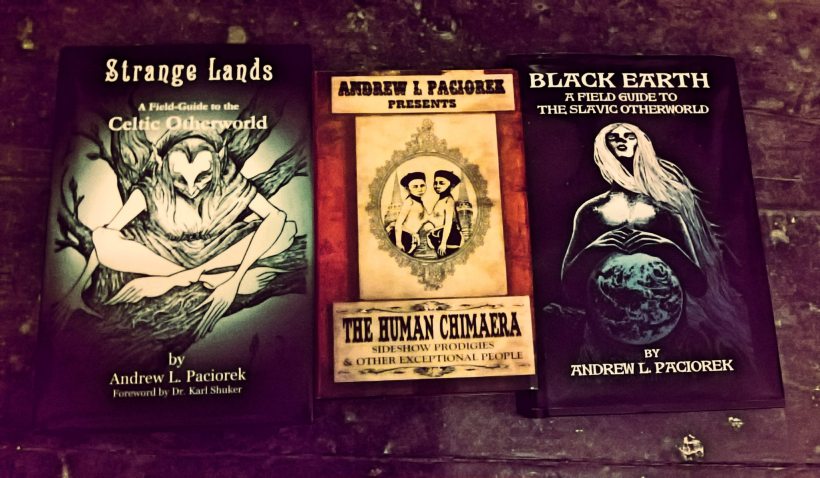
Let’s finish with a boring but fundamental question. If anyone is interested in commissioning you for art work or just buying one of your books, how do we get in touch?
My solo books are available mail-order only from
http://www.blurb.co.uk/user/andypaciorek
but books I have illustrated for Harper Collins and other publishers are generally possible to buy from bookshops, Amazon etc. I can be contacted at andypaciorek@yahoo.co.uk
Andy, thanks so much!
This Interview first appeared in Fairy Investigation Society; Newsletter 7. New Series. January 2018
Founded in Britain in 1927. The Fairy Investigation Society has members from many different walks of life with different views about fairies and fairy existence: what ties us together, in mutual respect, is an interest in fairy-lore and folklore.
Read the Fairy Census 2014 -2017 here – fairy census 2014 -2017
Alongside Darren Charles, Andy Paciorek will be discussing witches, faeries and folk horror at the The Pagan Federation Scottish Conference on Saturday April 21st 2018
Andy Paciorek books Discount Code
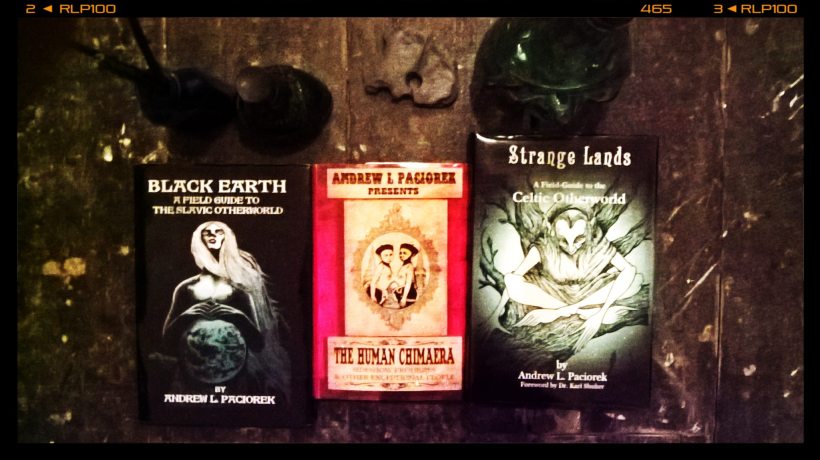
![]() A hung, drawn and quarter off Andy Paciorek books.
A hung, drawn and quarter off Andy Paciorek books.
Perfect Halloween presents for all boos and ghouls. ![]()
To claim 25% Discount add code TBFAM25 at checkout at –
www.blurb.co.uk/user/andypaciorek
Offer valid through October 16, 2017 (11:59 p.m. local time).
for overseas orders change the little flag on the top of web-page to own country ![]()
20% Discount – Strange Lands and The Human Chimaera

Save 20% on Orders of the books Strange Lands: A Field Guide To the Celtic Otherworld and The Human Chimaera: Sideshow Prodigies and Other Exceptional People. Both written and fully illustrated by Andy Paciorek.
Just add code GIFTWORTHY20 at checkout at http://www.blurb.com/user/andypaciorek
|
No minimum or maximum order amount.
*Offer valid through December 13, 2016. |
Strange Lands is a deeply researched and richly illustrated information guide to the entities and beasts of Celtic myth & legend and to the many strange beings that have entered the lore of the land through the influence of other cultures and technological evolution.
At nearly 400 pages and featuring over 170 original illustrations, Strange Lands is an essential accompaniment for both the novice and seasoned walkers between worlds. Includes a foreword by Dr. Karl Shuker
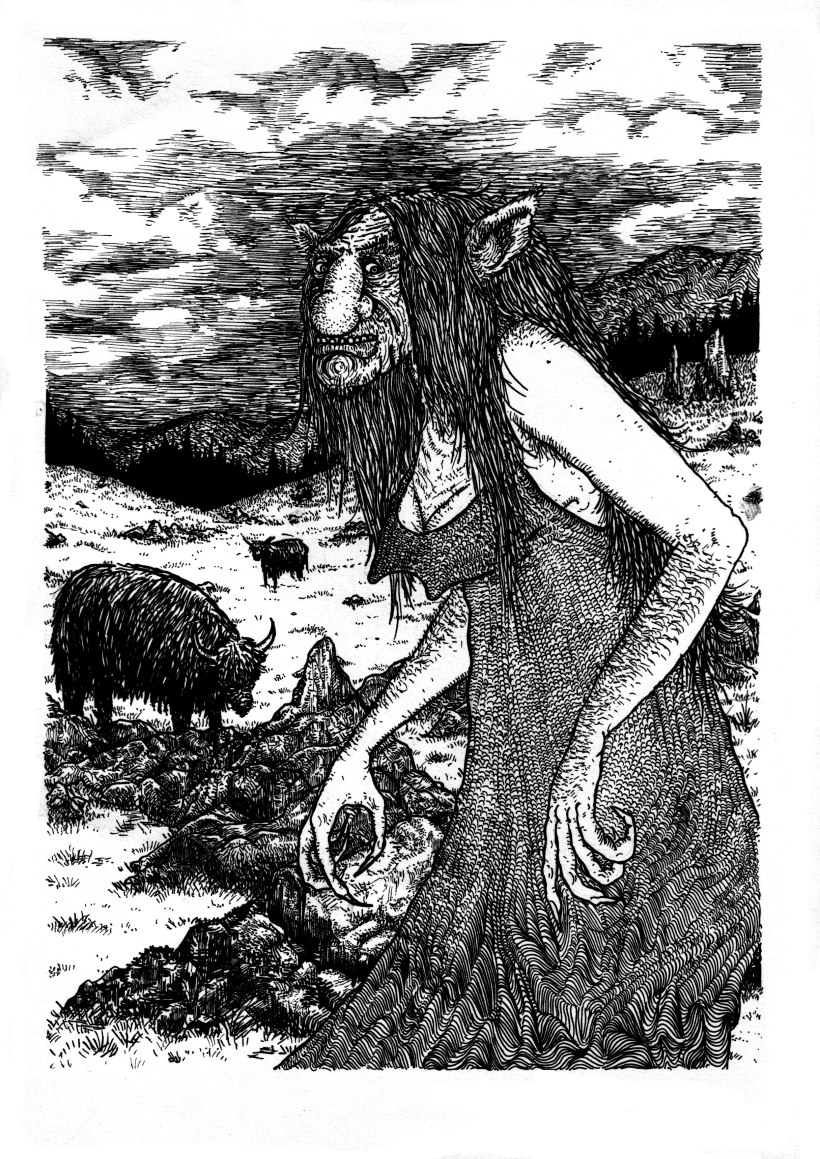
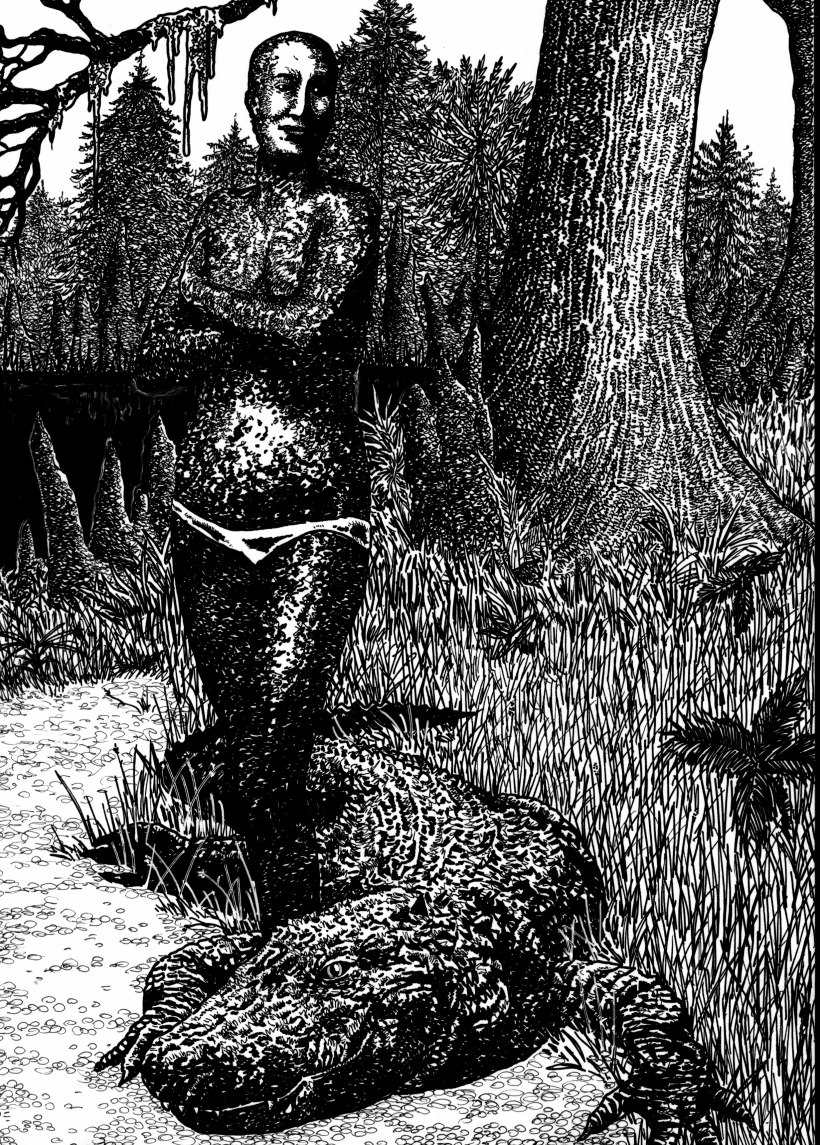
Containing over 100 original pen & ink portraits alongside biographic text, The Human Chimaera is an indispensable guide to the greatest stars of the circus sideshows and dime museums.
Includes a foreword by John Robinson of Sideshow World.
Just add code GIFTWORTHY20 at checkout at http://www.blurb.com/user/andypaciorek
|
No minimum or maximum order amount.
*Offer valid through December 13, 2016. |
Andy Paciorek Book Discount
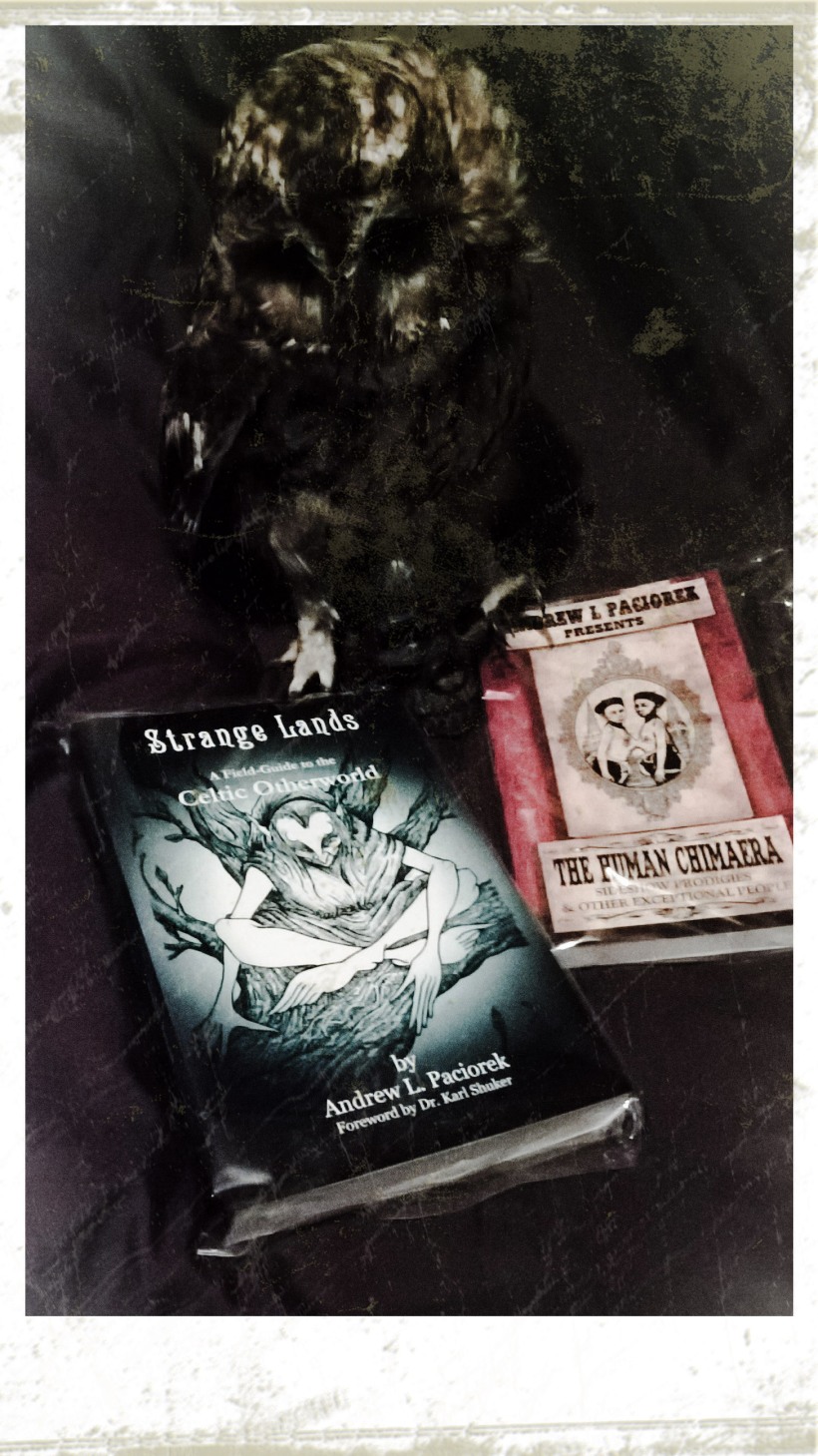
Great gifts for your Ghoulfriend or Boofriend this Halloween 3:)
20% Discount on Strange Lands : A Field Guide To The Celtic Otherworld and / or The Human Chimaera: Sideshow Prodigies and Other Exceptional People
Just add code TREAT20 at checkout at ~ http://www.blurb.com/user/store/andypaciorek
offer valid until end of 12th October 2016
Strange Lands is a deeply researched and richly illustrated information guide to the entities and beasts of Celtic myth & legend and to the many strange beings that have entered the lore of the land through the influence of other cultures and technological evolution.
At nearly 400 pages and featuring over 170 original illustrations, Strange Lands is an essential accompaniment for both the novice and seasoned walkers between worlds.
Foreword by Dr Karl Shuker
Containing over 100 original pen & ink portraits alongside biographic text, The Human Chimaera is an indispensable guide to the greatest stars of the circus sideshows and dime museums.
Includes a foreword by John Robinson of Sideshow World.
















